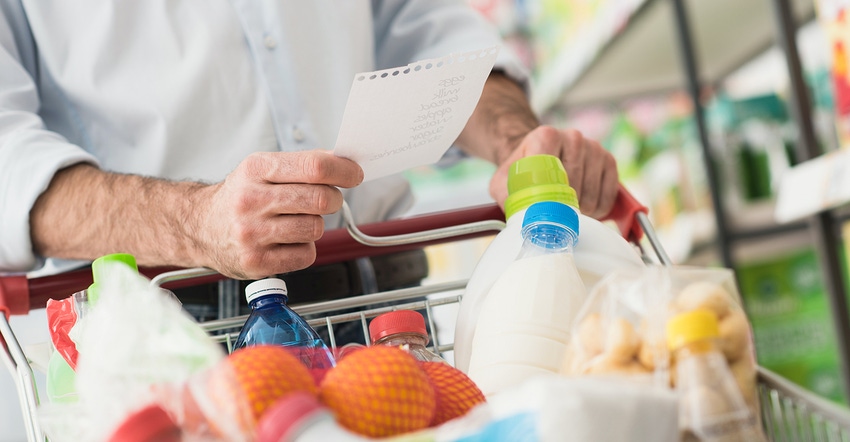Recent data shows that American shoppers are reviving categories including powdered milk and canned meat products in addition to baking up a storm.

Research analysts at M Science report that U.S. grocery stores are up almost 80% in terms of year-over-year dollar growth. Natural retailers were outperformed in terms of traffic—but not basket size—by big-box chains, which M Science attributes to the former's smaller store formats, niche product offerings, lower inventory and generally less established delivery or click-and-collect systems.
But what exactly are these shoppers buying?
A medley of things, some surprising and some typical of any situation that induces widespread panic-buying.
Data from Nielsen shows the skyrocketing popularity of powdered milk, up 285.9% for the week ending March 21. Oat milk was up 513.1% for that same week.
Canned meat and spiral hams are also making a comeback, up 282% and 622.1%, respectively.
With regard to food, shelf-stable SKUs have the lion's share of sales as consumers attempt to reduce their trips to the grocery store.
According to Catalina Marketing, shoppers are reallocating funds once used for personal grooming accessories to books and other items that can help pass the time at home. Sales for healthy home living products including air purifiers and handheld cleaning devices are also on the shopping list for homebound consumers.
Nielsen expects consumers to continue paying premiums on products that fulfill their hygiene needs in addition to foods that keep them healthy.
America's e-commerce system is also being put to the test. Visual Capitalist finds that soups, rice, packaged foods like ramen, fruit cups and milk and cream are the fastest growing food product categories in this sector as of March 2020.
While not a food product, bread machines have been selling like hotcakes off platforms such as Amazon, and Americans are consequentially clearing store shelves of flour and yeast to get their quarantine bread-baking fix.
And those who have missed the rush are still getting in on the baking action by turning to homemade yeast and flour substitutes like grinding rye berries to produce rye flour, NBC reports. While it is a way to pass the time, baking diet staples including bread also helps avoid food waste, keep grocery stores less crowded and relieve some of the demand on overworked grocery store employees.
About the Author(s)
You May Also Like




